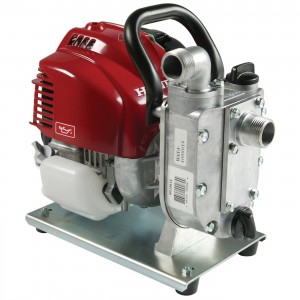 The Honda WX10 water pump is one of the most compact and durable models on the market, but even this small powerhouse isn’t immune from the occasional ignition problem or technical issue. Luckily, Honda’s instruction manual is full of common problems and their easiest fixes. Before assuming the worst and calling a local service technician to address the problem, make sure to follow basic troubleshooting guidelines that might reveal an easy, at-home repair instead.
The Honda WX10 water pump is one of the most compact and durable models on the market, but even this small powerhouse isn’t immune from the occasional ignition problem or technical issue. Luckily, Honda’s instruction manual is full of common problems and their easiest fixes. Before assuming the worst and calling a local service technician to address the problem, make sure to follow basic troubleshooting guidelines that might reveal an easy, at-home repair instead.
Stay Safe While Troubleshooting the Water Pump
Though small and unassuming, Honda’s WX10 water pump could inflict serious injury if equipment owners aren’t careful while they conduct troubleshooting. Before getting started, allow the engine to cool off and make sure that the pump is placed on a level surface, away from bystanders, in an area with excellent ventilation. If handling sharp objects or moving parts, wear appropriate gloves and glasses to further reduce the risk of serious injury. With these precautions taken, maintenance and repair of common problems will be far safer.
Common Engine Problems
Some of the most common problems with the WX10 arise from minor engine issues and maintenance oversights. The easiest way to diagnose engine problems is to proceed through a step-by-step procedure based on its loss of power or its inability to start. Here’s what equipment owners should know as they work through these processes.
1. The Engine Won’t Start
An engine that refuses to start is usually suffering from a lack of fuel or improper control settings. Start by checking whether the water pump currently has enough fuel to run properly and consistently. If the fuel tank isn’t full, add fresh, unleaded gasoline and try starting the engine a second time. If the problem persists, consider checking and changing the water pump’s controls.
First and foremost, make sure the choke is in the “closed” position if the engine is cold. An improper choke position will cause the engine not to start at all. Also make sure that the throttle is in the starting position, and check the ignition switch to make sure that it’s in the “on” position. If these checks don’t yield results, consider adjusting or replacing the spark plug. As a last resort, have the engine inspected by a local Honda technician.
2. The Engine Lacks Power
The two most common causes of this problem are the air filter and the fuel itself. Start by removing the air filter from its location within the engine, inspecting it for any damage or encrusted dirt. If the filter looks damaged or exceedingly dirty, it should be either replaced with an OEM part or cleaned with a mild detergent. Once the filter is clean, it can be reinserted and the equipment can be tested for more consistent power.
If the air filter is not the source of the problem, the fuel is likely to blame. Low fuel, or fuel that has been allowed to go “stale,” will cause the engine to operate erratically and with inconsistent power. Refuel the equipment, draining old fuel as necessary to achieve operational behavior. If this does not work, consider taking the engine to a local technician.
Common Pump Problems
Another common area of concern for WX10 owners is the pump mechanism. From time to time, the pump can either refuse to displace water or it can suffer from low overall output. There are a few key things to check when either of these situations arises.
1. There is No Pump Output
Many new equipment owners forget that they must prime the pump before using it. Failing to prime the pump results in no output when the engine is engaged. Simply turn the engine off, fill the priming area full of water, and restart the pump. If this does not solve the issue, a collapsed or damaged suction hose may be to blame. If the hose shows signs of significant wear, replace it with a hose of the appropriate length, diameter, and construction, and attempt to start the pump a second time.
Less common causes of this issue include excessive head or engine problems that may be preventing the pump from working properly. If engine problems are to blame, a Honda technician is the best source for answers and a timely repair.
2. There is Low Pump Output
Low pump output may be caused by damaged suction or discharge hoses. This problem may also arise if the throttle is not set to “high” while the pump is turned on. Engine problems and an excessive head may also be to blame for low pump output. As mentioned earlier, a Honda technician best diagnoses engine trouble.
Get the Right Parts for Troubleshooting at HondaLawnParts.com
HondaLawnParts.com is an excellent resource for OEM parts needed during water pump repairs. At the site, equipment owners can find parts based on their part number, the corresponding water pump model number, or the engine type paired with their water pump. In all three instances, OEM parts will be easy to find and repairs will be even easier to conduct.
